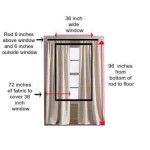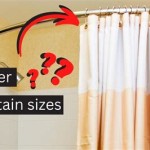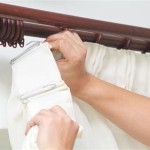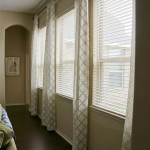Do Light Filtering Curtains Block Heat?
Light filtering curtains are a popular window treatment choice for homeowners seeking a balance between privacy and natural light. They offer a softer, diffused light compared to sheer curtains while still allowing some visibility to the outside. However, their effectiveness in blocking heat is often a question mark. This article examines the heat-blocking capabilities of light filtering curtains, exploring the factors that influence their performance and offering insights into making informed decisions.
Fabric Composition and Weave
The fabric composition and weave play a crucial role in determining the heat-blocking capabilities of light filtering curtains. Tighter weaves generally offer better insulation against heat transfer. Materials like linen and tightly woven polyester tend to perform better than loosely woven cotton or synthetic blends. The color of the fabric can also influence heat absorption; darker colors absorb more heat while lighter colors reflect it.
Openness Factor
The openness factor refers to the percentage of open space in the fabric weave. Light filtering curtains typically have a lower openness factor compared to sheer curtains, meaning they have fewer gaps in the weave. This tighter weave contributes to their ability to reduce heat transfer, although it's important to remember that they are not designed primarily for insulation.
Additional Layers and Treatments
Pairing light filtering curtains with other window treatments can significantly enhance their heat-blocking effectiveness. Adding a thermal lining or using them in conjunction with blinds or shades creates an additional barrier against heat gain and loss. This layered approach can help regulate indoor temperatures more effectively, leading to energy savings.
Climate and Sun Orientation
The effectiveness of light filtering curtains in blocking heat can vary based on the climate and the direction the windows face. In hot climates with intense sunlight, light filtering curtains alone may not be sufficient to prevent significant heat gain, especially for west-facing windows that receive direct afternoon sun. In milder climates or for north-facing windows, their heat-blocking capabilities might be more adequate.
Color and Reflectivity
As mentioned earlier, the color of light filtering curtains impacts their heat absorption properties. Lighter colors, particularly white and pastels, reflect more sunlight and heat away from the window, helping to keep the room cooler. Darker colors absorb more heat, which can contribute to a warmer room temperature, especially during sunny periods.
Window Size and Coverage
The size of the window and the extent to which the curtains cover it also affect their ability to block heat. Larger windows generally allow for more heat transfer. Ensuring the curtains extend beyond the window frame and overlap in the center can minimize heat leakage around the edges. Floor-length curtains can also help prevent heat transfer from the floor area beneath the window.
Cost and Maintenance
Light filtering curtains are generally more affordable than heavier thermal curtains or blackout curtains. They are also relatively easy to maintain, often requiring only occasional washing or dry cleaning. Their lightweight nature makes them easy to install and operate, adding to their appeal as a versatile window treatment option.
Air Gaps and Insulation
Even with light filtering curtains, air gaps between the fabric and the window can still allow for heat transfer. Minimizing these gaps, for example, by using a curtain rod that extends closer to the wall or by adding side returns to the curtains, can improve their insulating effectiveness.
Comparison to Other Window Treatments
Compared to sheer curtains, light filtering curtains offer better heat-blocking properties due to their tighter weave. However, compared to blackout curtains or cellular shades, their insulation capabilities are lower. Blackout curtains are specifically designed to block light and heat, while cellular shades create air pockets that trap air and provide superior insulation.
Long-Term Energy Savings
While light filtering curtains might not offer the same level of insulation as dedicated thermal curtains, they can still contribute to some energy savings by reducing heat gain in summer and heat loss in winter. This can translate to lower energy bills over time, especially when combined with other energy-efficient practices.

Seriously Do Thermal Curtains Really Work Deconovo Us

Do Blackout Curtains Keep Heat Out Marathon Be

Beat The Heat With Breezy Summer Curtains For A Cooler Home

Light Filtering Vs Blackout How To Choose The Shade

How To Block Light Leaking From The Top And Sides Of Your Curtains

Blackout Vs Room Darkening Sheer Curtains Lumos

Light Filtering Vs Blackout How To Choose The Shade

Seriously Do Thermal Curtains Really Work Deconovo Us

What Are The Best Curtains For Blocking Summer Sun

Thd Grant 100 Full Complete Blackout Heavy Thermal Insulated Energy Saving Heat Cold Blocking Curtain Drapery








